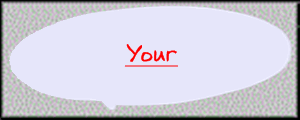This subject presents a comprehensive introduction to data warehouse and data mining. It provides a solid understanding of data and database technology, and explains why advances in both have come together to create the field of data warehouse and data mining. Data warehouse architecture, data warehouse model, OLAP, association rules, classification and cluster analysis, mining stream, time-series and sequence data, and mining object, spatial, text and web data, will be examined in this course.
Learning Outcomes
On successful completion of this course, you will be able to:
- Demonstrate understanding of the processes and techniques used in data mining.
- Implement practical solutions using data mining approaches
- Be able to write algorithms to implement data mining techniques for applications
- Discuss issues of implementation and usage of data mining
- Familiar with data mining as a database technology for emerging applications.
- PDF folder (Chapter 1 to chapter 9)
- Slide power point note folder (Chapter 1 to chapter 10)
Download form mediafire
1. PDF folder --> >>download here<<
1. Slide folder --> >>download here<<
Download form 4share
1. PDF folder --> >>download here<<
1. Slide folder --> >>download here<<







2 comments:
saya cuba cari langkah2 utama data mining.. tp xjumpa dalam slaid tu.. mungkin saya yang tak faham nota dalam slaid tu kot... boleh tolong?
ok2.. saya dah jumpa dah.. maaf ye..
The most commonly used techniques in data mining are:
1. Artificial neural networks: Non-linear predictive models that learn through training and resemble biological neural networks in structure.
2. Decision trees: Tree-shaped structures that represent sets of decisions. These decisions generate rules for the classification of a dataset. Specific decision tree methods include Classification and Regression Trees (CART) and Chi Square Automatic Interaction Detection (CHAID)
3. Genetic algorithms: Optimization techniques that use processes such as genetic combination, mutation, and natural selection in a design based on the concepts of evolution.
4. Nearest neighbor method: A technique that classifies each record in a dataset based on a combination of the classes of the k record(s) most similar to it in a historical dataset (where k ³ 1). Sometimes called the k-nearest neighbor technique.
5. Rule induction: The extraction of useful if-then rules from data based on statistical significance.
Post a Comment